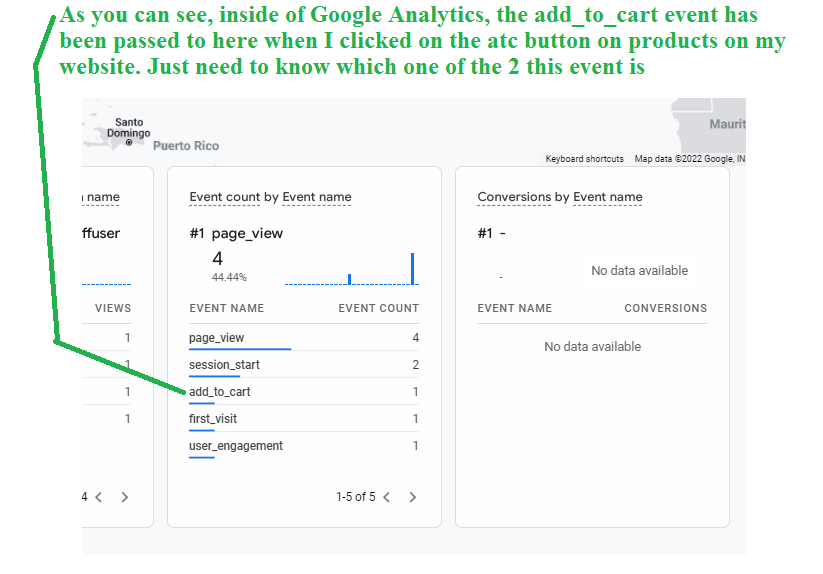Unlocking Remarketing in Google Analytics: Boost Your Conversion Rates
The art lies in calculated audience division and crafting engaging ad material that resonates with individuals. The key to opening the complete possibility of remarketing lies in recognizing user actions and interests to make the most of ROI.
Understanding Remarketing in Google Analytics
Remarketing in Google Analytics is an effective device that permits companies to re-engage and target with customers that have formerly communicated with their site or application. By utilizing this attribute, businesses can present targeted ads to users as they browse the web or make use of other applications, advising them of products or solutions they formerly checked out. This calculated approach assists organizations remain top-of-mind with possible customers, enhancing the chance of conversion.
One key aspect of remarketing in Google Analytics is the capability to develop custom-made audience checklists based on details criteria such as web pages gone to, actions handled the site, or market information. These listings permit companies to tailor their remarketing campaigns to various sectors of their target market, making sure that the right message gets to the ideal individuals at the correct time.
Moreover, remarketing in Google Analytics provides useful insights into individual actions and the efficiency of marketing campaigns. By tracking user communications and conversions, businesses can refine their techniques to enhance targeting and optimize ROI. Generally, understanding the complexities of remarketing in Google Analytics is important for companies looking to improve conversion rates and drive development.
Establishing Remarketing Lists
When carrying out remarketing techniques in Google Analytics, the preliminary action entails developing customized target market checklists tailored to certain standards. These checklists are crucial for targeting certain teams of users who have interacted with your web site in a particular method. To establish remarketing lists effectively, navigate to the Admin section of Google Analytics, then select the wanted account and home (What Is “Remarketing” In Google Analytics?). From there, click on Target market Definitions and pick Audiences. Next off, click on the +New Target market button and pick the kind of target market you intend to create, such as individuals who checked out a specific page or completed a specific activity. You can better improve your audience by adding specific problems and specifications to ensure you reach the right users with your remarketing projects.

Crafting Compelling Remarketing Advertisements
Crafting engaging remarketing advertisements entails tactically designing messages that resonate with your target audience and drive them to take wanted activities. Customization is crucial in remarketing ads, so consider utilizing dynamic advertisements that reveal items or services that a user has formerly viewed on your internet site.
In addition to customization, engaging advertisement duplicate is vital. Consisting of incentives like price cuts or limited-time deals can also assist enhance click-through prices.
An aesthetically appealing advertisement is extra likely to order the audience's focus and drive them to review your website. By read this post here incorporating personalization, persuasive copy, and attractive visuals, you can develop remarketing ads that successfully re-engage individuals and boost your conversion rates.
Studying Remarketing Performance

Click-through rates (CTRs) show the portion of customers that clicked the advertisement after seeing it. A high CTR signifies that the ad is relevant and engaging to customers. Conversion rates reveal the percent of customers that completed a preferred action, such as buying or signing up for an e-newsletter, after clicking the ad. Evaluating the price per purchase assists in recognizing the expenses incurred to acquire a client with remarketing. Return on advertisement spend (ROAS) gauges the profits produced for every single buck invested in advertising, showing the earnings of the project. By evaluating these efficiency metrics, marketing experts can recognize locations for enhancement and refine their remarketing methods to boost conversion rates and total campaign success.
Maximizing Remarketing Methods

Furthermore, enhancing remarketing methods entails segmenting audiences based on different criteria such as demographics, habits, and passions - What Is “Remarketing” In Google Analytics?. By producing targeted advertisements that reverberate with each section, marketing professionals can raise the chance of re-engaging individuals and driving conversions.
Constant surveillance and optimization of remarketing projects based on real-time information and understandings are crucial for making the most of ROI and enhancing conversion rates. By implementing a data-driven technique and refining strategies home based upon performance metrics, online marketers can open the full potential of remarketing in Google Analytics.
Conclusion
Finally, harnessing the power of remarketing in Google Analytics can substantially boost conversion prices by re-engaging with previous web site site visitors with customized ads. By developing customized target market checklists, crafting engaging advertisements, examining performance metrics, and continuously optimizing approaches, businesses can maximize his comment is here ROI in remarketing projects. This data-driven method ensures that advertising initiatives are targeted and effective in driving customer interaction and inevitably boosting conversions.
On the whole, understanding the ins and outs of remarketing in Google Analytics is important for services looking to increase conversion rates and drive growth.
You can better fine-tune your target market by adding particular problems and parameters to guarantee you get to the right customers with your remarketing campaigns.
By incorporating personalization, persuasive copy, and appealing visuals, you can produce remarketing advertisements that efficiently re-engage customers and increase your conversion prices.
By analyzing these efficiency metrics, marketing professionals can identify locations for renovation and refine their remarketing strategies to enhance conversion prices and total project success.
In final thought, taking advantage of the power of remarketing in Google Analytics can dramatically enhance conversion rates by re-engaging with previous site site visitors via tailored advertisements.